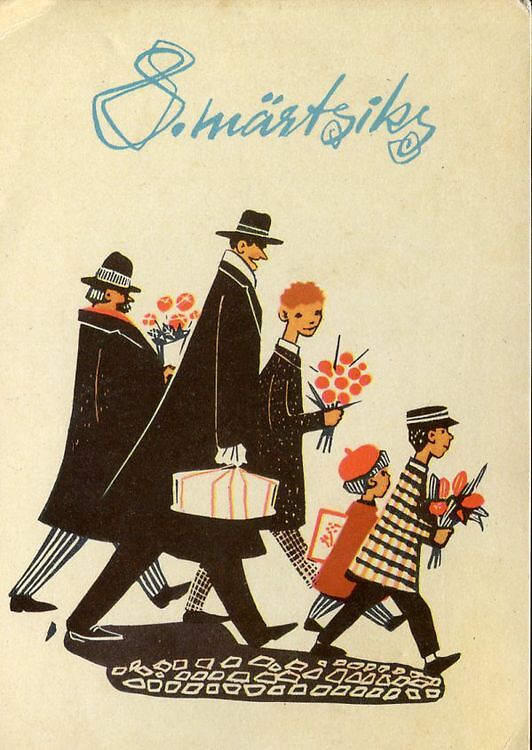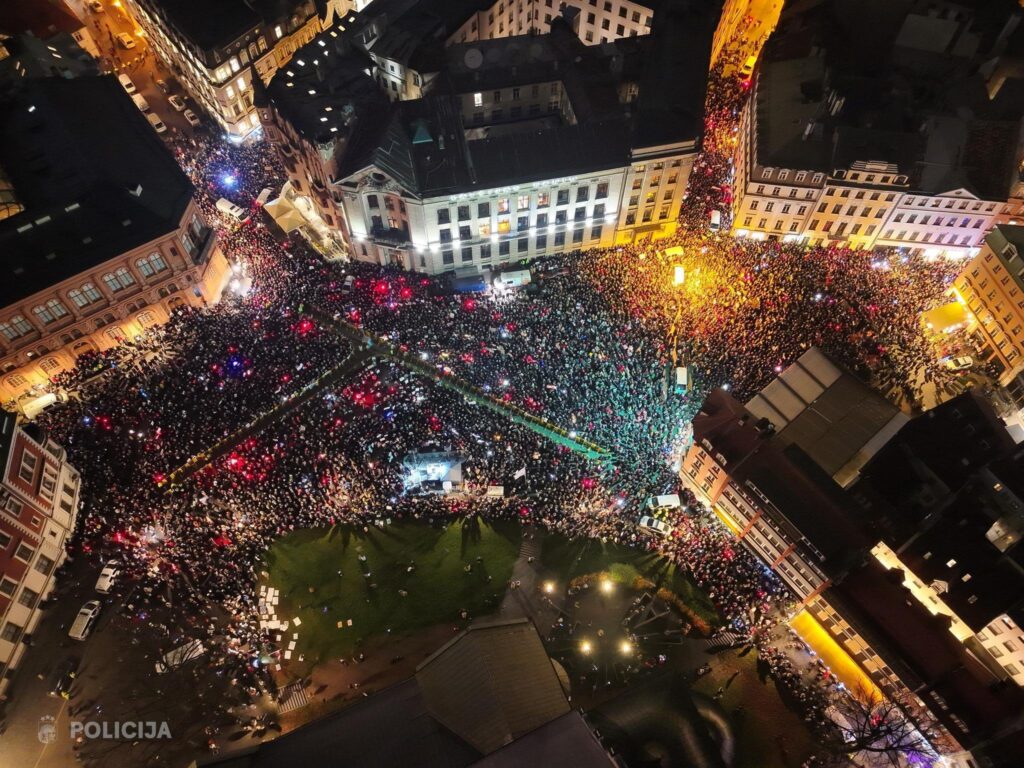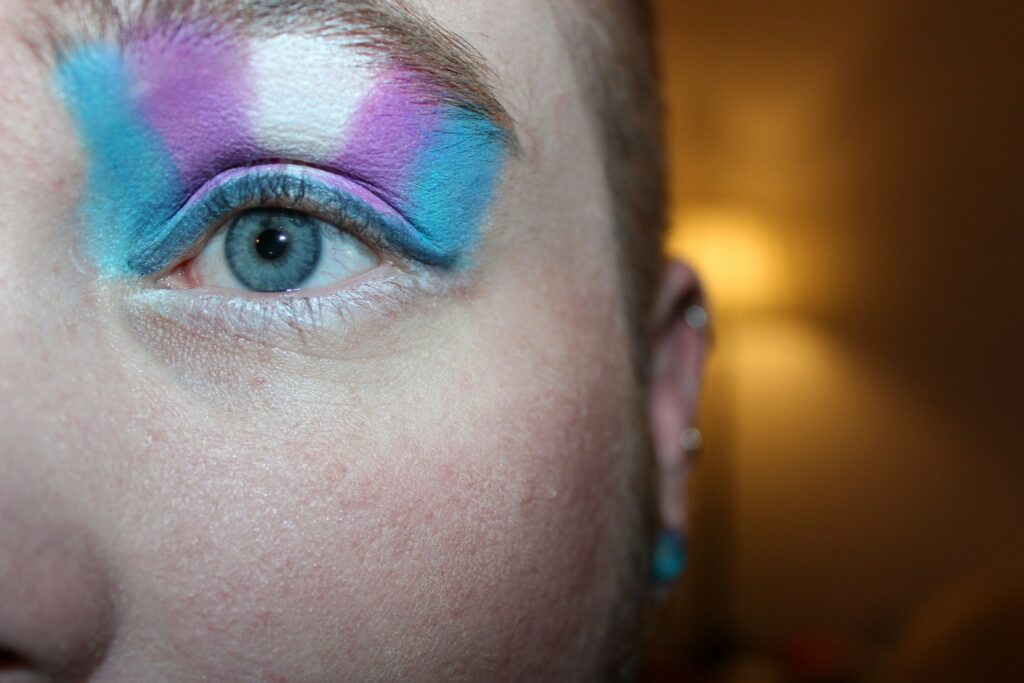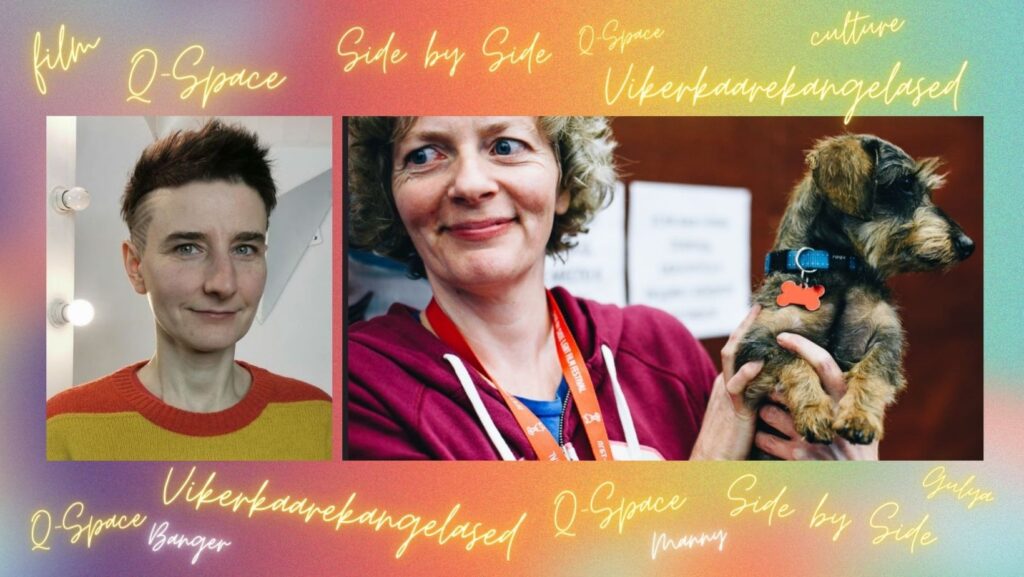Women’s Day: time to gaze beyond the mirror
International Women’s Day, celebrated on the 8th of March, started over 100 years ago as a solidarity movement in a fight for equal pay, fair working hours, and voting rights. Since then it has changed its focus with some dismissing its relevance due to today’s position of (white) women and others due to the traditions of infantilizing women surrounding it. And then there are those, who simply enjoy the attention it brings them or their loved ones. But Feministeerium invites you to use this day as an opportunity to focus on intersectionality and think about how the plight of other marginalized groups affects us all.

Postcard from 1964. Artist: Asta Vender
Transphobia hurts cis women (also)…
Trans women remain one of the most victimized groups, both in terms of violent crime and discrimination, including at health facilities. Transphobia as well as discriminatory social norms and legislations also hurt cis people, especially women. With the rise of anti-trans violence, the cases of cis-gendered people being attacked and killed because of the attacker mistaking them for being trans are also on the rise.
Sports regulations, that are aimed at “sussing out” trans women, create a hostile environment for all female athletes, subjecting all women, including the cis-gendered ones, to invasive tests like genital examination, and eliminating them from competitions based on their bodies and hormone levels deviating from the perceived “acceptable” female standards.
… and homophobia hurts heterosexual people (as well)
Since the beginning of the HIV epidemic worldwide, it has been presented as having a direct correlation with homosexuality. In Estonia, up until March of 2024, men, who have had sexual encounters with other men, were restricted from donating blood due to an outdated and inaccurate presumption that HIV and other STDs are more likely to spread among this group. However, about half of diagnosed HIV carriers in Estonia are women, and only about 5% of new HIV cases come from homosexual encounters. This prejudice not only created an unnecessary shortage of blood donations but has actively discouraged heterosexual men from testing and disclosing their HIV status due to the fear of being perceived as homosexual, thus potentially endangering their sexual partners. Consequently, we are seeing a global rise in HIV-positive diagnoses in heterosexual women and men.
Homophobia and heteronormativity also lie at the root of male mental health issues, with heterosexual men experiencing greater negative self-attitudes and internalized stigma associated with homophobia. Adherence to the societal norms of masculinity dissuades heterosexual men from expressing their emotions, accepting vulnerabilities, and ultimately seeking support. This, in turn, can affect their interactions with loved ones, colleagues, and subordinates, cultivating unhealthy relationship dynamics and dismissing the struggles of others following in the steps of dismissing their own.

1989 Women’s Day postcard
Homophobia and transphobia also create a hostile environment for people of any sexual orientation or gender identification, if they divert from the perceived gender norms. This may lead to premature sexual involvement, which increases the chances of teen pregnancy and the spread of sexually transmitted infections, as teens are pressured to engage in heterosexual intimacy to conform to the “norm”. At the same time, such a dynamic can demonize unconventional expressions of sexuality, perpetuating internalized stigma and unhealthy relationships with one’s sexuality, as well as inhibiting close interpersonal connections with same-sex peers based on the fear of being perceived as anything other than heteronormative.
You benefit from equality even if you haven’t been (recently) discriminated against
The root of inequality lies in prejudice, dismissal, and their systemic nature. Prejudice against a specific group thrives, in large part, because it is socially acceptable to deem some lesser than others, solidifying the notion that equal rights and respect are conditional. Conditional not on an individual’s intent, actions, or how they affect the society around them, but on the inherent or perceived characteristics of that person. While that system remains unchallenged, everybody is a potential target of discrimination, and all that’s required to become a target is the dividing line between “us” and “them” moving, as its sole presence inhibits appreciation of other types of diversity.
An integrated society, on the other hand, makes it easier to make decisions and achieve goals that will be beneficial to all its members. Increased diversity in decision-making teams leads not only to better results but also requires less deliberation time due to combining the expertise of people with different backgrounds and their unique perspectives. Inclusion of women and minority representatives in peace talks leads to a higher number of agreements reached as well as those agreements being reasonable enough for the parties involved to uphold. Gender equality, although more often associated with the fight for women’s rights, has also been shown to have a positive effect on the longevity of men, with the gender gap in life expectancy shrinking in countries with a higher gender equality index.
Thus, a fight against discrimination, even if it does not immediately and directly affect people outside of the group in question, benefits society as a whole.

Women’s Day greeting depicted in an unusually androgynous way. NB! No, we are not supporters of the Soviet Communist Party. Poscard from 1969, artist Ene Pikk
Reality is built upon each person’s individual experiences
A truly integrated society, that allows one to reap its benefits, is not achievable without addressing and eliminating the barriers of intersectional marginalization. Simply opening the doors of opportunity to all does not allow those facing multiple levels of discrimination to actually get involved in societal processes on an equal level with the privileged majority. Social, economic, and health-related barriers in the absence of corrective mechanisms funnel the privileged majority to the top, leaving the rest behind a glass wall in full view of the supposedly open doors.
The intersectional approach does not only help address the overlapping marginalization of select minority groups. At its core, it is the acknowledgment that everyone has their own unique experiences of discrimination and oppression and we must consider everything and anything that can marginalize people – gender, race, class, sexual orientation, physical ability, etc. But it also requires awareness of one’s privilege, platforming, and listening to those who face discrimination and adversity in ways not familiar to us or the majority.
In a fight against gender-based discrimination and for equal opportunity, we urge you to direct your attention not only to the struggles and achievements of your immediate peers but first and foremost to those, to whose experience you do not relate directly. Time to look away from the mirror and focus on supporting women of color, gender minorities, and those differently-abled or economically challenged, so we can stand together for a better society for us all.











